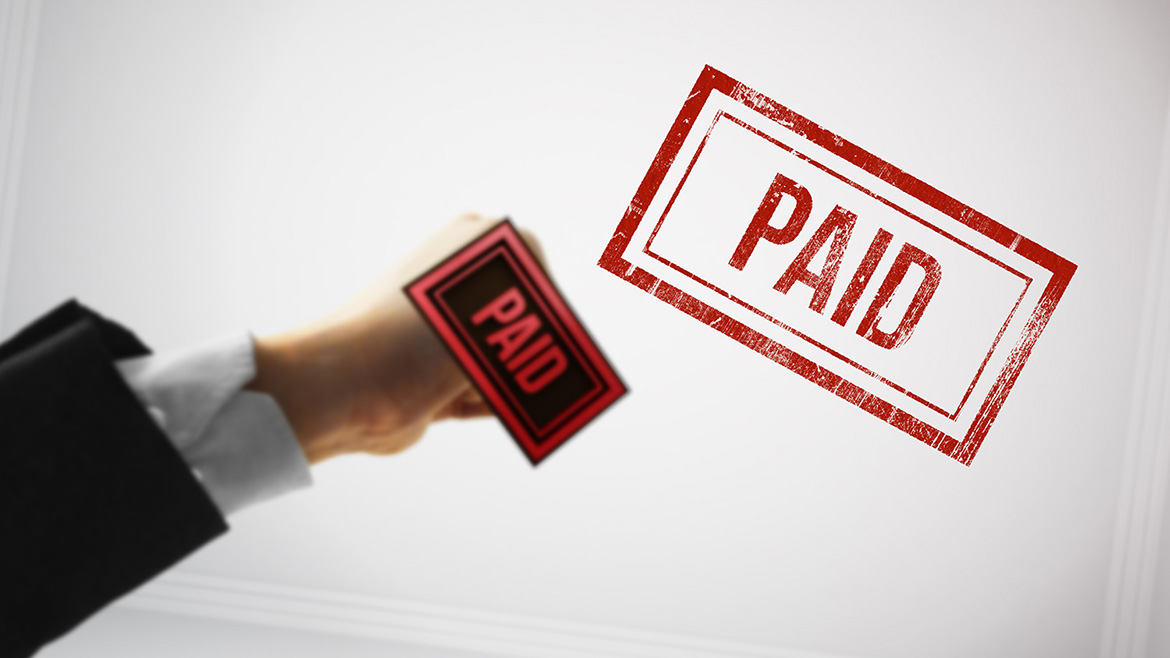Restoration contractors and insurance companies have a symbiotic relationship. Some might even say we have more of a love/hate relationship as insurance companies want to minimize how much they have to pay out on a claim and restoration companies want to make as much as they can. The insurers need restorers to mitigate damage and make their policyholders whole, but they aren’t always willing to pay for what the repairs cost and allow enough for the restorer to make the profit margin he or she needs.
From a financial perspective, restorers and insurers often find themselves at polar opposites. Inevitably, if you are a restoration company, sooner or later you will run into situations where the adjuster won’t pay for work you completed or only a fraction of what you have estimated the cost to be. In these situations, restorers have a few options, which depend in large part as to how far you’re willing to go, how much you’re willing to spend and if the risk is worth the reward.
1. Make a compelling case.
Before you decide to go to war over a bill or an estimate, do your due diligence to support your position.
Before you decide to go to war over a bill or an estimate, do your due diligence to support your position. Take lots of detailed photos or use a Matterport scan to point out damage, get subcontractor bids and compile receipts. Use exhaustive F9 notes in your line-item entries to explain in detail why certain tasks were done or why they are necessary, etc. In many cases this effort alone, although time consuming, will compel the adjuster to consider paying more as long as the supporting documentation is well defined and legitimate. If this fails and you decide to escalate the dispute to the next level, you will have everything an attorney, public adjuster or appraiser will need to argue your case.
2. Get a public adjuster involved.
In situations where your estimate is a lot higher than the adjuster’s, or if your scope of work includes far more than what the adjuster estimated, you may be headed for a dispute. One way to resolve this may be to encourage the insured to hire a public adjuster on an overage basis. In this scenario, a public adjuster would only get paid a fee over and above what may have already been paid by the insurance company.
For example, if you wrote a $100,000 estimate on a fire loss and the adjuster only paid $40,000, then a public adjuster would try to fight for the remaining $60,000. Whatever the public adjuster’s efforts bring in over and above the original undisputed amount of $40,000 would be considered the overage or increased benefits the public adjuster was able to get. Most public adjusters charge more than 10% to work in this capacity, unless the disputed amount is very large. Lastly, using a public adjuster in this capacity is no guarantee that they will be successful, so you need to be careful here.
3. File a mechanic’s lien.
In the United States, contractors who perform work and suppliers who provide materials to repair or improve property have a legal right to get paid. If you provide restoration services and don’t receive payment, you may be able to file what is called a mechanic’s lien. Every state and/or county may handle the filing of these liens a little differently, so you may need to consult with an attorney as to how you can file the proper paperwork to reserve your rights.
Mechanic’s liens are typically enforced through judicial foreclosure sales, i.e., through court proceedings similar to mortgage foreclosures. The court must determine whether the requirements of the statute have been met and, if so, the priority of the mechanic's lien being foreclosed relative to the other liens or encumbrances on the title. Once that is determined, the court can order the property sold and the proceeds of the sale applied to the liens in the order of their priority.
4. Demand appraisal.
Most property insurance policies contain dispute resolution language commonly known as the “Appraisal Clause.” Appraisal is similar in concept to binding arbitration and the insured or insurer can invoke this clause in the event of a dispute over the values or scope of damage. Here the insured has to hire and pay for their own expert as their appraiser and the insurer hires and pays for their own expert. Then the two appraisers have to agree on a neutral umpire whose fees are usually equally split between the insured and the insurer. The umpire acts like a judge to decide on issues that the two appraisers can’t agree on and at the end of the appraisal, if two out of the three members of the appraisal panel agree on an award amount, the value of damage becomes binding.
I have been involved in many appraisals over the years, primarily as an umpire, and I can say from experience that appraisal can be a very effective way to resolve a dispute on an insurance claim.
In California, the appraisal clause reads like this: “In case the insured and this company shall fail to agree as to the actual cash value or the amount of loss, then, on the written request of either, each shall select a competent and disinterested appraiser and notify the other of the appraiser selected within 20 days of the request. Where the request is accepted, the appraisers shall first select a competent and disinterested umpire; and failing for 15 days to agree upon the umpire, then, on request of the insured or this company, the umpire shall be selected by a judge of a court of record in the state in which the property covered is located. Appraisal proceedings are informal unless the insured and this company mutually agree otherwise. For purposes of this section, “informal” means that no formal discovery shall be conducted, including depositions, interrogatories, requests for admission, or other forms of formal civil discovery, no formal rules of evidence shall be applied, and no court reporter shall be used for the proceedings. The appraisers shall then appraise the loss, stating separately actual cash value and loss to each item; and, failing to agree, shall submit their differences, only, to the umpire. An award in writing, so itemized, of any two when filed with this company shall determine the amount of actual cash value and loss. Each appraiser shall be paid by the party selecting him or her and the expenses of appraisal and umpire shall be paid by the parties equally. In the event of a government-declared disaster, as defined in the Government Code, appraisal may be requested by either the insured or this company but shall not be compelled.”
Keep in mind that appraisals can get very expensive and often take many months before a final award is reached. In addition, it is absolutely critical that the insured selects an appraiser who knows insurance restoration and is well versed in estimating with Xactimate. Otherwise, if the appraiser is not a seasoned restoration professional or someone with a lot of property claim experience, the result of the appraisal could be disastrous.
5. Hire a lawyer or file a lawsuit.
This option should be a last resort as lawsuits can get really expensive. There’s no guarantee that you’ll win, and they can take months or even years to settle. However, that being said, most insurance companies would rather try and settle a dispute out of court rather than face paying all the legal fees, expert fees and court costs to defend themselves. I know of many plaintiff attorneys that have won considerable settlements defending contractors and sometimes all it takes is a well-written demand letter.


